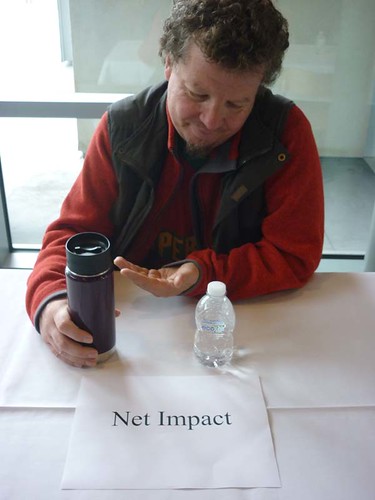Can a boat be designed to clean the water? How does a spider manufacture resilient fiber? We need products that don’t harm us or the environment, and nature’s already done the research.
++++++
 Last week I wrote about the benefits of recycling, composting, reusing and reducing in How I Learned to Stop Wasting and Love the Trash. In it, I mentioned that one of the most challenging problems in the recycling process is that many products currently on the market are made with materials that can be downcycled at best.
Last week I wrote about the benefits of recycling, composting, reusing and reducing in How I Learned to Stop Wasting and Love the Trash. In it, I mentioned that one of the most challenging problems in the recycling process is that many products currently on the market are made with materials that can be downcycled at best.
While we can try to constantly be on guard and personally avoid certain products altogether, leaving the dodging of poorly designed mass-produced items to conscious individuals seems like an uphill battle.
What if companies used materials and manufacturing processes that aren't bad for the environment and considered a product's entire life cycle? What if we didn't have to fear everything going through our hands as a threat to our health and the planet's ecosystem? Is it even possible to make certain things without toxic side effects, and if so, is it too much to ask manufacturer's to do so?
The answer, at least for the most part, is yes, and I'd like to share this article I wrote for YES! Magazine about a year ago about two models that have already provided many of the answers on how to design and produce in better alignment with the planet's natural mechanisms: Cradle to Cradle and Biomimicry.
Follow me below the orange spider web to get the full scoop on these two exciting disciplines.